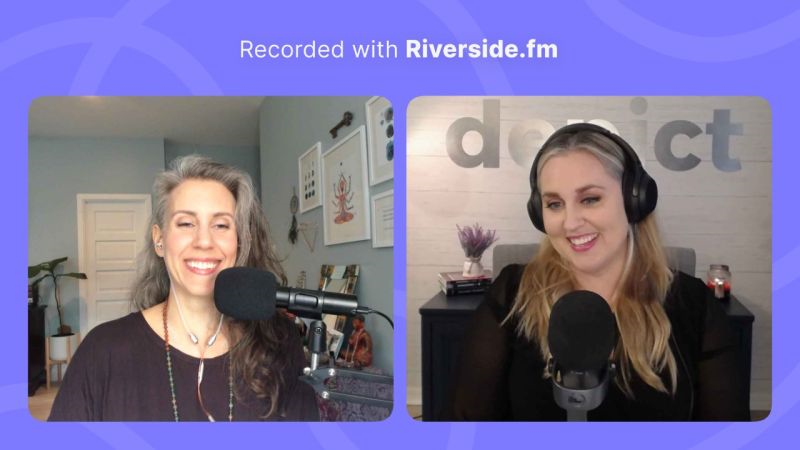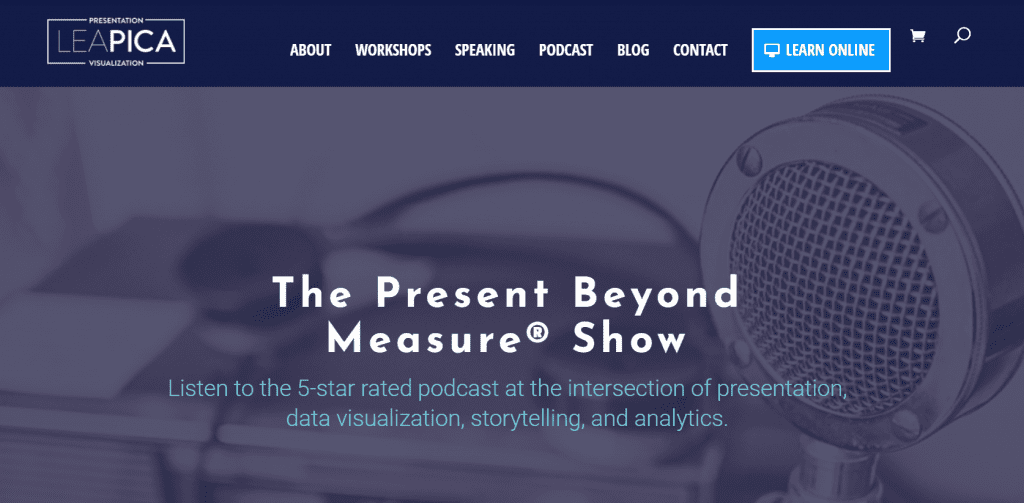This is an Eval Central archive copy, find the original at depictdatastudio.com.
You’ve been asked to make a dashboard—now what?!
Dashboard is a tricky term; it means different things to different people.
In this article, you’ll learn how to:
- choose between various dashboard types (static or interactive, single or series); and
- deal with common dashboard challenges.
Lea Pica’s Present Beyond Measure Podcast
I recently had the chance to be on the Present Beyond Measure podcast, hosted by Lea Pica.
Lea is a seasoned digital analytics practitioner, social media marketer and blogger with over 11 years of experience building search marketing and digital analytics practices for companies.
You can listen to all of Lea’s podcast episodes here.
What’s Inside
Here are some of the topics we talked about:
- All about my journey into data viz and how I leveraged my skills.
- The poll that I use to start the conversation around data dashboards!
- Different perceptions of dashboards and the first steps for client conversations.
- The four types of dashboards and the steps in the planning process.
- The necessary software for dashboard creation and thoughts on the nuances between different programs.
- Tips and tricks for streamlining your data extraction process.
- Challenges that I have seen most often in the dashboard creation process.
- Unpacking the discussion around layout and chart types and my personal approach.
- My recommendation of an impactful book dealing with the power of text placement.
- Why I’m so excited about progress in the field of dashboard creation.

Defining the Term “Dashboard”
I asked Lea to give her definition of a dashboard (hint: there’s a million correct answers!).
Lea said,
“My definition of a dashboard is a single view suite of data chart modules, or data form modules, that are designed to alert a lay audience to the most critical business key performance indicators, business metrics, in a way that they can either make very basic decisions on their own or alert them to ask the proper teams to investigate those chains further.”
Whoa! That’s one of the most sophisticated answers I’ve ever heard.
Different Perceptions of Dashboards
Dashboard software programs are relatively new.
If you’ve entered the field recently, you might associate “dashboards” with specific software programs, like Tableau or PowerBI.
In the past, “dashboards” meant static one-pagers, like a printout or a PDF. For example, you might prepare a one-page handout of key metrics that would be printed and discussed at a board meeting.
How to Plan Your Next Dashboard Project
On the podcast, Lea and I talked about how to plan for your next dashboard project.
Step 1: Define the Term “Dashboard”
First, recognize that each team member has a different idea of the term “dashboard.”
Some people might want to dive in and build a dynamic dashboard.
Others might be envisioning a one-page PDF, or even some slides to discuss at a meeting.
Step 2: Static or Interactive?
Second, talk about whether you need a static or interactive dashboard.
Static means you need a meeting handout or a one-pager of key facts and figures. You could share the one-pager as an email attachment or post it on a website.
Busy leaders don’t have the privilege of time, so providing a one-pager is a gift. It’s like saying, “I’ve already dug through all the messy data, here’s what I think are the key findings for you in this neat, tiny, little package.”
Interactive dashboards (or dynamic dashboards) have drop-down menus, checkboxes, and buttons.
We’ve all seen and used these dashboards, either on our computers or in our phone apps.
But, sometimes people don’t need or want that much information.
Technical audiences will probably appreciate an interactive dashboard, but non-technical audiences might appreciate a one-pager.
In the podcast, you’ll hear Lea and I discuss the mismatches we see.
Technical people like using interactive dashboards, so we make interactive dashboards. We have to pause and remember that our audiences might be non-technical, and they might prefer a static one-pager.
Step 3: Single or Series?
Third, figure out whether you a single dashboard or lots and lots of matching dashboards.
For example, leaders at a state education agency might need an overview of all the schools, aggregated together.
Principals would benefit from seeing their own school’s data.
Within a single project, you might need a single dashboard (the overview for the state education agency) and a series of matching dashboards (one per school for each of the principals).
Step 4: Choose Your Software Program
Finally, choose your software program.
Audience decisions should come before software decisions.
I’m a big fan of everyday software, so I tend to make most of my dashboards in Microsoft Excel.
Excel, PowerPoint, and Word are the common language among all the groups I work with, and I think people are pleasantly surprised to see how much Excel can do.
Common Dashboard Challenges
In the podcast, Lea and I discussed common dashboard challenges.
Designing Your First Dashboard
Getting your first dashboard set up is the hardest part.
If you’ve got a dashboard, I’d love to give you five gold stars, seriously.
You might have needed to hire new staff, attend training, or spend hours fiddling with that first dashboard. Celebrate your wins, vizard.
Making Sure Your Dashboard Isn’t Too Dense
Then, we talked about some specific design challenges.
The biggest challenge I see is volume, or how much we try to include in a dashboard.
I see a lot of dashboards that look very full. They’ve got so many charts. They’re bursting at the seams.
If that happens in your project, take a time-out. Try to remember which one audience this dashboard is for.
It can’t be for your boss, board members, the public, fellow staff, and your peers.
Each of those groups is going to need different charts, so if you try to fit everyone’s information requests inside a single dashboard, it starts to overflow.
Pick your one audience, and then prioritize the data points that your one audience needs.
Use Familiar Bar Charts, or Variety?
Another common dashboard challenge is choosing the right chart type.
I come from a research background, so my go-to chart type is bar charts.
I have way too many bar charts. My drafts are bar, bar, bar, bar. As I edit, I add more variety.
There’s a delicate trade-off between adding variety and sticking with everyday charts, though.
In the podcast, you’ll hear Lea say that she sees a benefit in using everyday charts.
“People immediately understand what they’re supposed to understand from seeing those [familiar] charts. There’s no learning curve, there’s no training gap,” Lea explained.
In the podcast, you’ll also hear me talk about a recent client. Their dataset has three nested levels (i.e.., categories, subcategories, and sub-subcategories).
We brainstormed several options for their dashboard: a tree diagram, sunburst diagram, and Sankey diagram. Together, we weighed the pros and cons of each approach: What does it highlight? How easy is it for someone else to understand? Is this the pattern we really want to emphasize—or not?
But another consideration is time and software options. Is it worth the staff time to develop those charts for the dashboard? Or do we stick with the usual bar charts?
Book Recommendation: I Am a Book
In the podcast, you’ll hear Lea ask me whether I’ve read any good data or design books recently.
I mentioned I Am a Book. I Am a Portal to the Universe by Stefanie Posavec and Miriam Quick.
This book has my favorite text placement of all time. The Nobel Prize for text placement! It gave me permission to use huge fonts, diagonal fonts, and even circular fonts. What a masterpiece.
The Future of Data Storytelling
Finally, Lea and I talked about the future of data storytelling.
“I can’t wait until I can stop talking about some of the topics I’m talking about,” I said.
“Let’s re-record this in 10 years and our dashboard conversation, I cannot wait for that to be a different conversation.”
I can’t wait to stop saying that some interactive dashboards should actually be static.
I can’t wait to stop saying that non-technical and technical audiences have different dashboard preferences.
I can’t wait to stop saying that the leaders and the doers have different information needs.
Your Turn
What does the term “dashboard” mean to you? Every workplace has a slightly different definition.
What type of dashboard do you need for your project? Static or interactive? Single or series?
What are some of the most common dashboard challenges you’ve seen?
Connect with Lea Pica
Website: leapica.com
The Present Beyond Measure Podcast: leapica.com/podcast
LinkedIn: linkedin.com/in/leapica
